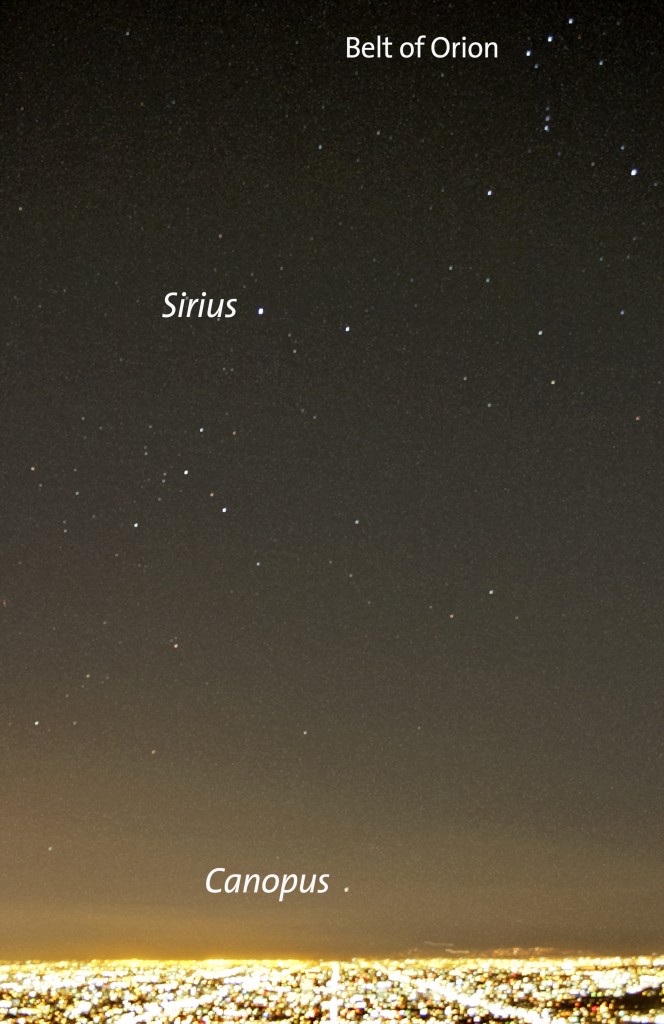![]() LISTEN to this week’s Sky Report
LISTEN to this week’s Sky Report
This is the Griffith Observatory Sky Report through March 15th, 2017. Here’s what’s happening in the skies of southern California.
Daylight saving time starts on Sunday the 12th. On that morning, 1:59 a.m., Standard Time will be followed by 3:00 a.m., Daylight Time. Set your manual clocks ahead one hour before you sleep on Saturday night. Standard time will return on November 5th.
The moon shines brightly during most of the nighttime hours through the 15th. The moon changes from waxing gibbous to full on the morning of the 12th. Afterwards, it is waning gibbous through the 20th.
Look to the west at sunset, or a little before sunset if the air is very clear, to see the brightest planet, Venus. Venus appears lower and lower in the sky each successive evening as it approaches its conjunction with the sun on the 25th. The conjunction is when Venus will pass nearly between Earth and the Sun. After the conjunction, Venus will appear before sunrise. Venus is 24 degrees above the horizon at sunset on the 8th and it is only 14 degrees high on the 15th. The planet currently displays a slender crescent visible through telescopes and steadily held binoculars.
During the evening twilight, the planet Mars is similar in appearance to a moderately bright orange star. The planet is located in the constellation Aries the Ram, and it is about 20 degrees to the upper left of Venus. Mars is on the distant side of its orbit from the Earth, and it is now too far away to see its surface details through telescopes.
The brightest nighttime star, Sirius, glitters high in the southern sky when night falls. Sirius is in the constellation Canis Major, the Large Dog, and it is sometimes called the Dog Star. Twenty-two minutes before Sirius crosses the southern meridian, the second brightest star, Canopus, (see photograph above), in the constellation Carina the Ship’s Keel, is at its highest, but it is a challenge to see from Los Angeles. To the residents of the extreme southern tip of Chile and the southern island of New Zealand, Canopus passes directly overhead. From Los Angeles, however, Canopus barely clears the southern horizon, and is just shy of four degrees high when it is at its highest and due south. For an angular comparison, your clenched fist appears about 10 degrees high when viewed at arm’s length. Because of the low elevation, our atmosphere dims Canopus, but the star still appears moderately bright from Los Angeles on a clear night. As is true of all stars, Canopus reaches the meridian about four minutes earlier than it did on the previous night. Look for it at 7:11 p.m. on the 8th and at 6:57 p.m. on the 11th. Because of the start of Daylight time, it will transit at 7:53 p.m. on the 12th, and at 7:41 p.m. on the 15th, just after twilight ends.
The second brightest planet, Jupiter, is eye-catching over the eastern horizon by 9:30 p.m., before the time change, or by 10:30 p.m. afterward. The giant planet is highest in the sky at 3:00 a.m., PST and at 4:00 a.m., PDT starting on the 12th. The moon appears close to Jupiter in the sky on the 13th and 14th. Jupiter’s four largest moons are visible through binoculars. A telescope will enable you to observe the planet’s intricate banded clouds belts and oval storms. Jupiter’s most famous storm, the salmon-hued Great Red Spot, will face West-Coast observers at 11:00 p.m. on the 8th, 10th, 13th, and 15th.
The ringed planet Saturn looks like a bright golden star in Sagittarius the Archer. It is highest and is due south as dawn starts. Saturn’s rings, now at their maximum face-on tilt to Earth, are spectacular through nearly any telescope.
Free views of the Sun during the day and of the moon, planets, and other celestial objects at night are available to the public in clear weather through Griffith Observatory’s telescopes from Tuesday through Sunday, before 9:30 p.m. Check our website for the schedule. The next free public star party on the grounds of Griffith Observatory, hosted by the Los Angeles Astronomical Society, the Sidewalk Astronomers, and the Planetary Society, will take place on Saturday, April 1st.
Follow the Sky Report on Twitter for updates of astronomy and space-related events.
From Griffith Observatory, I’m Anthony Cook, and I can be reached at griffithobserver@gmail.com.

